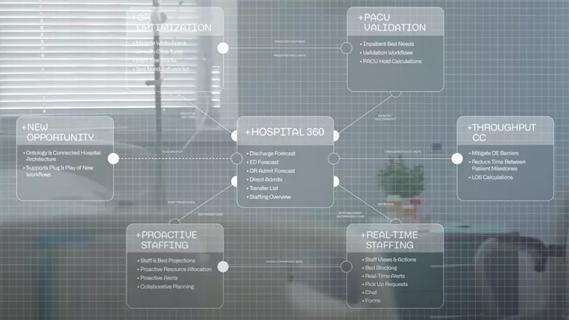Integrating technology is more than product delivery

Hospital mergers and acquisitions have become increasingly common due to rising healthcare costs, staffing constraints and demanding regulatory requirements.
Advertisement
Cleveland Clinic is a non-profit academic medical center. Advertising on our site helps support our mission. We do not endorse non-Cleveland Clinic products or services. Policy
Merger activity has spiked to its highest level in seven years as hospitals seek to expand access, broaden services and deliver better care while gaining financial stability.
A recent Kaufman Hall analysis showed that nearly 40% of affiliated hospitals added one or more services post-acquisition.
“Hospital integrations are highly complex,” says Craig Baker, Global Growth and Design director within Cleveland Clinic’s Information Technology Division (ITD). “Success is tied to varied projects that must be adaptable.”
Baker shares, “Several years ago, ITD worked with a vendor to develop expected workflows for established main campus clinical service lines. Following the initial work, these workflows became obsolete due to waning ownership and stewardship. Moreover, the workflows didn’t evolve as new applications were introduced and caregiver roles were expanded.”
From a global design perspective, Baker and his team are broadening their scope to better align with service lines and applications, not just the digital product.
“While our North Star is to standardize technology, caregiver roles and workflows regardless of location, the reality is that variability exists.” Baker adds, “By discussing and documenting the expected workflows, we partner closely with local and enterprise teams to collectively build accountability toward adopting standard technology. These crucial discussions provide a global view of any outliers and the expected timeline to complete the IT integration.”
Takeaways from previous mergers led to a structured, well-defined process — the ‘pod’ concept — to repeatedly deliver the same experience for all acquired facilities and caregivers.
Advertisement
Global Growth and Design team members combine their varying perspectives and expertise to support an integrated cross-team approach by collaborating with team members from various specialties and departments including:
These connections cultivate a pod solution, or service-line orientation, not a product-centric focus. With a service-line perspective, each pod captures and escalates valuable input to offset potential issues.
Baker elaborates, “With a product-centric approach, there’s no accountability for the end-to-end workflows that drive a service line. The product owners and analysts are focused on their specific application build. This mindset creates tremendous workflow gaps and downstream issues.”
With pods, a designated team member is identified for each technology/application to ensure optimal end-to-end workflows for caregivers impacted by the integration. From there, the leader of each pod works with their local counterpart to review roles, workflows and potential risks.
“Knowing and addressing risks before implementation prevents issues during the site’s go-live,” says Baker. “Identifying risks and gaps during the project lifecycle allows for thoughtful analysis and problem-solving to ensure we don’t have issues downstream.”
Earlier identification of risks has led to fewer issue resolutions since adopting the pod solution.
Advertisement
“The sharp jump in identified risks during our most recent project was a victory to me.” Baker continues, “It showed we’re doing a better job connecting with our local teams. We’re listening to their concerns and making thoughtful decisions to prevent issues.”
“Having a service-line focus has shown us that integrating technology is much more than providing digital tools,” says Baker. “It’s about collaborative problem-solving, building trust and fostering connections”
The three-prong pod approach:
“Shifting to a service-line approach improves communication and connections throughout the integration process.” Baker adds, “We’ve seen how applying pods to our workflow promotes goodwill and support during the project’s duration and beyond.”
Advertisement
Advertisement

Digital “tripwires” detect and respond to malicious activity, boosting cybersecurity maturity

Thoughtful collaboration, data-driven decisions and effective change management lead to significant savings

Clinical input is integral to technology implementation and adoption strategy

Unit-based project decreases non-urgent alarms

Cleveland Clinic partners with Palantir to create logistical command center

Cleveland Clinic’s roadmap to recovering critical digital assets stems from strategic planning and preparedness

The Friends of Cybersecurity program bridges innovative technology solutions with mitigating security risks

Cleveland Clinic’s Information Technology Apprenticeship Program expands skill set while leading to meaningful employment